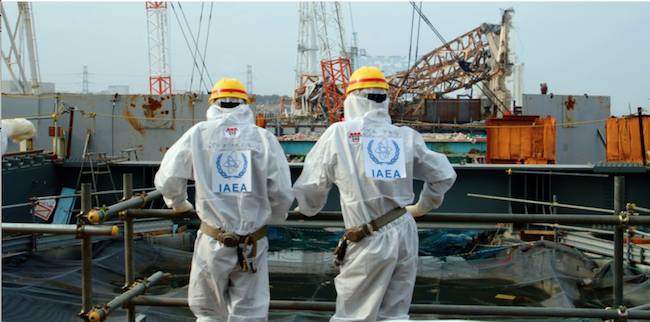Nuclear experts concluded today that a 450 million Dollar ice wall meant to contain radioactive water at the destroyed Fukushima Daiichi power station is only partially effective and that other measures were urgently needed.
The plant’s private operator Tepco says the ice wall has helped reduce the ever-growing amount of radioactive water by half. The plant also pumps out several times as much groundwater before it reaches the tsunami-damaged reactors.
The groundwater mixes with radioactive water leaking from the damaged reactors. Contaminated water also results from rainwater that comes in contact with tainted soil and structures at the plant.
Fukushima Daiichi suffered meltdowns of three reactors after an earthquake and tsunami on March 11 2011 in the worst nuclear disaster since Chernobyl. Investigators found that Tepco had not met basic safety requirements before the disaster.
The government-commissioned panel said additional measures need to be taken to minimise the inflow of rainwater and groundwater, such as repairing roofs and other damaged parts of buildings.
“We recognise that the ice wall has had an effect, but more work is needed to mitigate rainfall ahead of the typhoon season,” said panel chairman Yuzo Onishi, a Kansai University civil engineering professor.
The mile-long, coolant-filled underground structure was installed around the wrecked reactor buildings to create a frozen soil barrier to keep groundwater from flowing into the heavily radioactive area.
Tepco said today the amount of contaminated water that collects inside the reactor buildings was reduced to 95 tons per day with the ice wall, compared to nearly 200 tons without.
That is part of the 500 tons of contaminated water created every day at the plant, with the other 300 tons pumped out via wells, treated and stored in tanks.
In addition to the 450m dollars construction cost paid by the government, the ice wall needs about £7m a year to be spent on maintenance and operation.
The plant has been struggling with the ever-growing amounts of water — only slightly contaminated after treatment — now totalling 1 million tons and stored in 1,000 tanks, taking up significant space at the complex, where a decades-long decommissioning effort continues.
Officials aim to minimise the contaminated water in the reactor before starting to remove melted fuel in 2021.

No comments:
Post a Comment